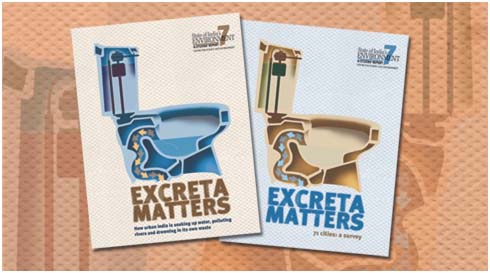Amita Bhaduri
Water scarcity in Delhi – Soaring demand or mismanagement – Panel discussion organized by Toxics Link and IIC, Delhi, August 7, 2012
Posted on 31 Aug, 2012 12:28 PMThe panelists included Himanshu Thakkar (South Asia Network on Dams, Rivers and People), Manu Bhatnagar (Head, Natural Heritage Division, INTACH) and A K Bajaj (Former Chairman, Central Water Commission) while Satish, Toxics Link moderated the discussion. A short film by TERI - “Water ignites life and hope” was also shown.
Living rivers, dying rivers: River Godavari
Posted on 04 Aug, 2012 08:52 AMThe lecture dealt with 'Perceptions of a river, life and the idea of floods in politics and commerce', with the metaphor of control over rivers dating back to the times of Sir Arthur Cotton, who built the Dowlaiswaram anicut on the Godavari in 1863.

Is mitigation of climate change in agriculture necessary ? - A lecture by Dr Eva Wollenberg, CCAFS at IARI, New Delhi
Posted on 03 Aug, 2012 08:32 AMIndia like many other developing countries has focused its agricultural policies on increasing agricultural production to meet food security.
"Eco-sustainable agriculture and rural livelihood" - Natural farming and environment festival organised by Kheti Virasat Mission at Bathinda, Punjab in May 2012
Posted on 23 Jul, 2012 06:22 PMUmendra Dutt speaking about Kheti Virasat Mission
Disappearing sparrows of Delhi A film screening and public discussion in May 2012 by Toxics Link
Posted on 08 Jul, 2012 05:20 PM‘Poor indeed is the garden in which birds find no home’ - Abram L. Urban
Living rivers, dying rivers: Rivers of Tamil Nadu and Kerala
Posted on 28 Jun, 2012 04:35 PMIntroduction

Mihir Shah Committee proposes new guidelines on MGNREGA: Some highlights
Posted on 21 Jun, 2012 04:32 PMThe Mahatma Gandhi National Rural Employment Guarantee Act (MGNREGA) aims at enhancing the livelihood security of people in rural areas by guaranteeing hundred days of wage-employment in a financial year to a rural household whose adult members volunteer to do unskilled manual work.
"Rural voices: Unheard to empowered" Report of a conference held on 3rd May 2012 by IRRAD, Sesame Workshop India Trust and UNESCO at Gurgaon
Posted on 18 Jun, 2012 12:50 PMThe Institute of Rural Research and Development (IRRAD), Sesame Workshop India Trust and United Nations Educational Scientific and Cultural Organization (UNESCO) jointly organized a conference titled “Rural voices: Unheard to empowered”’ on the occasion of the World Press Freedom Day 2012 on 3rd May, 2012 in
"Excreta Matters" - A profile of the water and sewage situation in 71 Indian cities - A report by the Centre for Science and Environment
Posted on 02 May, 2012 12:24 PMGuset post: Amita Bhaduri

Source: Excreta Matters, Centre for Science and Environment, 2012
